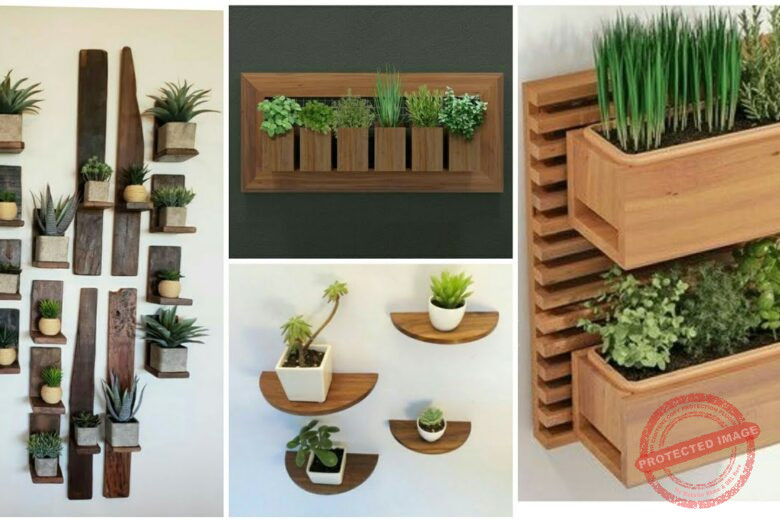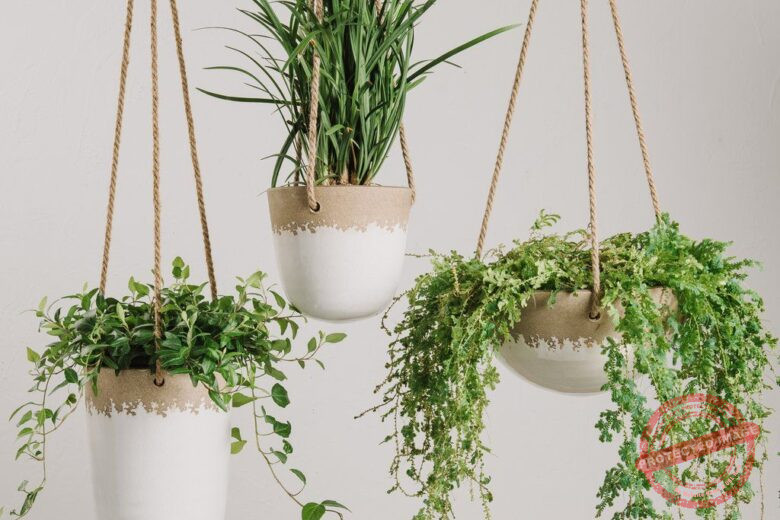Creating a successful vegetable garden starts with careful planning and a well-thought-out layout. A thoughtfully designed layout not only maximizes your space but also enhances the overall productivity and aesthetics of your garden. Whether you have a small backyard or a spacious plot, this step-by-step guide will help you create an efficient and visually appealing vegetable garden layout, even if you’re a beginner.
Planning Your Vegetable Garden Layout: A Step-by-Step Guide for Beginners
Assessing Your Space
Before diving into garden design, take some time to assess your available space:
Measure the Area
Measure the dimensions of your garden area to determine how much space you have for planting. This will help you plan the number of beds, their sizes, and the layout.
Read Also: 15 Best Vegetable Garden Layout App [2023 Gardner’s Rating]
Sunlight and Wind Patterns
Observe the sunlight and wind patterns in your garden throughout the day. Note areas that receive full sun, partial shade, or full shade. This information will guide your placement of sun-loving and shade-tolerant plants.
Choosing Your Vegetables
Selecting the right vegetables is essential for a successful garden:
Consider Your Preferences
Choose vegetables that you and your family enjoy eating. Focus on varieties that are well-suited to your climate and growing conditions.
Read Also: 50 Fastest Growing Vegetables and Fruits [2-9 Weeks]
Companion Planting
Research companion planting to maximize space and promote healthy plant growth. Certain plants have natural affinities and can benefit each other when planted together.
Designing Your Garden Beds
The layout of your garden beds contributes to both functionality and aesthetics:
Raised Beds vs. In-Ground Beds
Decide whether you want raised beds or traditional in-ground beds. Raised beds offer better soil drainage, warmth, and easier access for planting and maintenance.
Read Also: Can You Mix Potting Soil with Garden Soil?
Pathways and Accessibility
Plan pathways between your beds to ensure easy access and movement. Avoid making the pathways too narrow, as this can limit your ability to tend to your plants.
Creating Planting Zones
Organize your garden into distinct planting zones based on the needs of your plants:
Grouping Vegetables by Similar Needs
Cluster plants with similar water, sunlight, and soil requirements together. This makes it easier to provide the appropriate care to each group.
Read Also: Garden Soil vs. Potting Soil for Tomatoes: All You Need to Know
Succession Planting
Plan for succession planting to ensure a continuous harvest. As one crop is harvested, replant the same space with another crop that will thrive in the current season.
Implementing Vertical Gardening
Vertical gardening is an excellent space-saving technique:
Trellises and Supports
Install trellises, stakes, or cages for vining plants like tomatoes, cucumbers, and beans. This allows them to grow vertically and frees up ground space.
Read Also: [Gardener’s Manual] Tomato Flower to Fruit Time Lapse
Utilizing Vertical Space
Hang containers or use wall-mounted planters for herbs and compact vegetables. Utilize fences and walls for growing climbing plants.
Soil Preparation and Enrichment
Healthy soil is crucial for productive plants:
Soil Testing and Amendments
Conduct a soil test to determine its pH and nutrient levels. Amend the soil with compost, organic matter, and appropriate fertilizers based on the test results.
Read Also: Container Gardening For Plant Cultivation In South Africa
Mulching for Healthy Soil
Apply a layer of organic mulch around your plants to retain moisture, suppress weeds, and improve soil structure.
Planting and Spacing
Proper planting and spacing contribute to healthy plant growth:
Follow Seed Packet Instructions
Follow the planting depth and spacing recommendations on the seed packets. Overcrowding can lead to poor air circulation and increased susceptibility to diseases.
Read Also: Vertical Gardening For Plant Cultivation In South Africa
Utilizing Intensive Planting Techniques
Practice intensive planting by interplanting compatible crops closely together. This maximizes yield and reduces open spaces that weeds could occupy.
Caring for Your Garden
Regular care ensures a bountiful harvest:
Watering and Fertilizing
Water your plants consistently and deeply, especially during dry periods. Apply balanced organic fertilizers as needed to promote healthy growth.
Read Also: 20 Best Low-Maintenance Garden Plants in South Africa
Pest and Disease Management
Monitor your garden regularly for signs of pests and diseases. Use natural pest control methods, like introducing beneficial insects, and consider using organic sprays if necessary.
Harvesting and Rotating Crops
Harvest your crops at their peak to enjoy the best flavor and quality:
Knowing When to Harvest
Refer to plant-specific guidelines to determine when each vegetable is ready for harvest. Harvesting at the right time ensures optimal taste and texture.
Crop Rotation Benefits
Rotate your crops each season to prevent soil-borne diseases and maintain soil fertility. Avoid planting the same crop family in the same spot year after year.
Adding Aesthetic Elements
Enhance the beauty of your vegetable garden with creative touches:
Flowers and Ornamental Plants
Intersperse flowers and ornamental plants among your vegetable beds to attract pollinators and add visual appeal.
Garden Decor and Structures
Consider adding decorative elements like garden sculptures, benches, or arches to create a charming and inviting atmosphere.
Garden Layout Tool
Using a garden layout tool can greatly simplify the design process. Here are a few tools that can assist you:
Garden Planning Apps:
There are several smartphone apps available that allow you to virtually design your garden layout. They often include features like drag-and-drop functionality, plant libraries, and the ability to customize bed sizes.
Online Garden Planners:
Websites offering online garden planning tools provide a user-friendly interface for designing your garden layout. Some even provide recommendations based on your location and plant preferences.
Graph Paper or Sketching:
If you prefer a hands-on approach, use graph paper to sketch your garden layout. Each square on the paper can represent a specific measurement, making it easier to plan the layout to scale.
How Should I Layout My Vegetable Garden?
Designing a vegetable garden layout involves several considerations to ensure optimal plant growth and ease of maintenance:
Sunlight:
Place taller plants on the northern side of the garden to prevent shading smaller plants. Ensure that all plants receive adequate sunlight.
Spacing:
Allow sufficient space between rows and plants to accommodate growth. Crowded plants can lead to poor air circulation and increased disease risk.
Accessibility:
Plan pathways that allow easy access to all parts of the garden. This makes planting, watering, and harvesting more convenient.
What Is the Spacing for Vegetable Garden Rows?
Spacing between vegetable garden rows depends on the size of your plants and the equipment you’ll use for maintenance. As a general guideline, leave about 18-24 inches of space between rows. This provides enough room to walk and work between plants without compacting the soil.
Raised Bed Garden Layout
Raised beds are popular for their improved drainage and control over soil quality. When planning a raised bed garden layout:
Size: Keep the width of the beds to around 3-4 feet for easy access from both sides.
Pathways: Create pathways between the beds that are wide enough for you to comfortably move around.
Plant Selection: Opt for companion plants that thrive together and maximize the use of vertical space.
Vegetable Garden Layout Plans and Spacing
Consider these tips for creating efficient and productive vegetable garden layouts:
Crop Rotation: Avoid planting the same family of crops in the same spot each year to prevent soil-borne diseases.
Succession Planting: Plan multiple plantings of the same crop to extend the harvest season.
Intensive Planting: Utilize intensive planting techniques like interplanting and square foot gardening to make the most of your space.
Backyard Garden Layout
Designing a backyard garden layout involves incorporating aesthetics and functionality:
Zoning: Divide your backyard into functional zones, such as a seating area, vegetable garden, and flower beds.
Focal Points: Consider adding a focal point like a water feature, statue, or pergola to enhance the visual appeal.
Pathways: Create pathways that lead visitors through different areas of the garden.
Flower Garden Layout
When designing a flower garden layout, focus on colors, textures, and bloom times:
Color Schemes: Choose a color palette that complements your home and surroundings. Consider warm colors for a vibrant look or cool colors for a calming atmosphere.
Texture Variety: Mix plants with different leaf textures and sizes to create visual interest.
Bloom Sequence: Select plants with varying bloom times to ensure there’s always something in bloom throughout the growing season.
Flower Garden Layout Ideas
Here are some flower garden layout ideas to spark your creativity:
Cottage Garden: Create a charming and informal garden filled with a mix of colorful flowers and climbing vines.
Butterfly Garden: Plant nectar-rich flowers that attract butterflies and other pollinators.
Formal Garden: Design a symmetrical layout with neatly arranged flower beds and hedges.
Rock Garden: Incorporate low-growing plants, succulents, and ornamental rocks for a unique and low-maintenance design.
Small Backyard Garden Layout
In a small backyard, every inch of space counts. Optimize your small garden layout with these strategies:
Vertical Gardening: Use trellises, hanging baskets, and wall-mounted planters to grow plants vertically.
Container Gardening: Grow plants in containers to make the most of limited space.
Multi-Purpose Areas: Combine seating areas with planting spaces to create functional and attractive zones.
10 Best Vegetable Garden Layout Apps
If you’re looking for user-friendly apps to assist in designing your vegetable garden layout, here are 10 options:
- Garden Planner
- Home Outside
- Garden Time Planner
- VegPlotter
- Garden Compass
- My Garden
- Gro
- Smart Gardener
- Garden Plan Pro
- iScape
These apps offer a range of features to help you plan, visualize, and optimize your garden layout.
Designing a garden layout is a creative endeavor that involves combining practical considerations with your personal aesthetic preferences. Whether you’re starting from scratch, optimizing an existing garden, or designing for a specific purpose like vegetable or flower cultivation, these tools and ideas will help you create a garden that brings joy and beauty to your outdoor space.
Conclusion
Designing a vegetable garden layout involves careful planning and consideration of various factors, from sunlight and wind patterns to plant selection and spacing. By following these steps and incorporating your personal preferences, you’ll create a functional and visually pleasing garden that yields a bountiful harvest for you and your family to enjoy.
Remember, gardening is a continuous learning experience, so don’t hesitate to make adjustments and experiment as you go along. Happy gardening!



